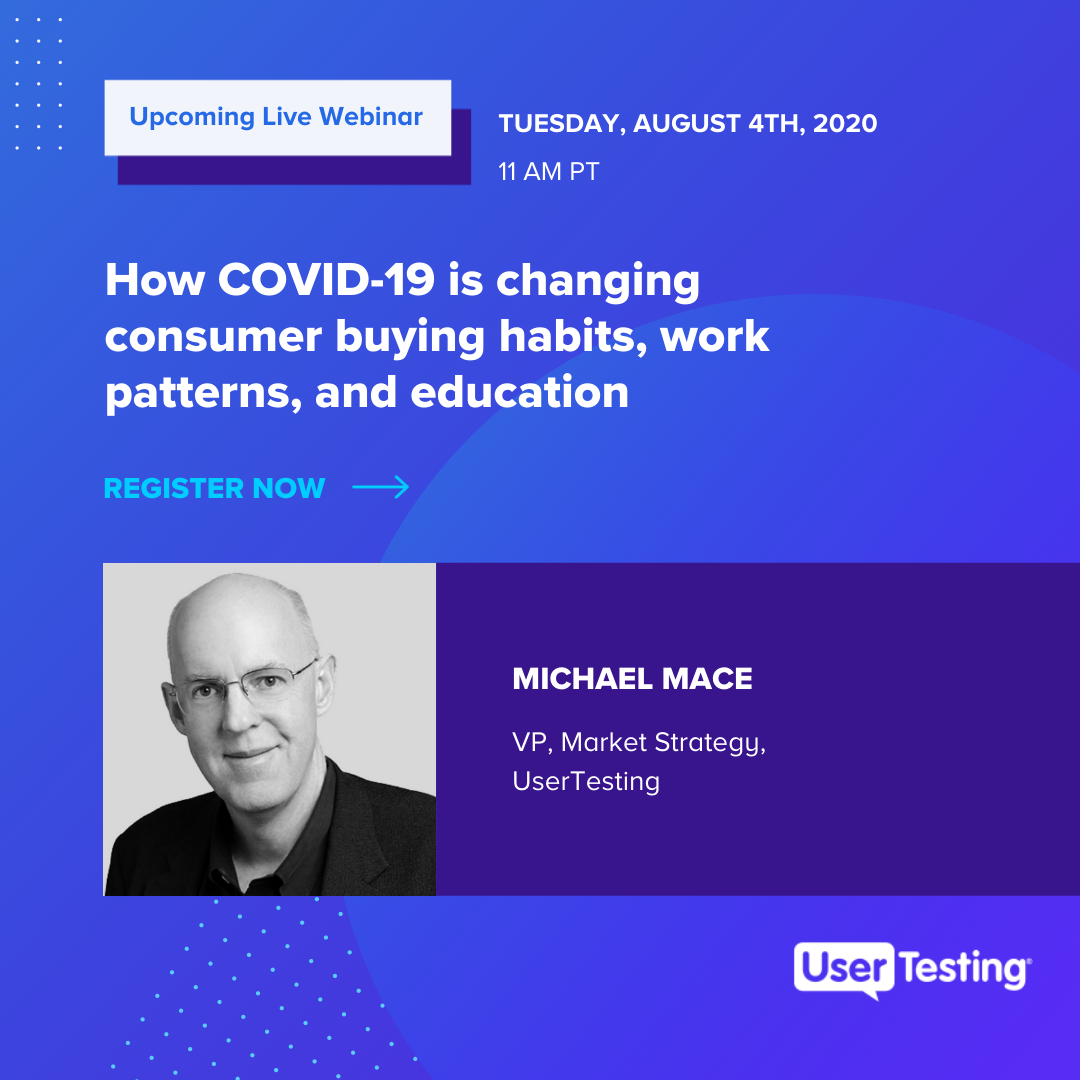
Home delivery rules today, but won’t necessarily rule tomorrow: UserTesting’s COVID-19 Impact Study, July 2020, Part 2

The pandemic has driven widespread use of home delivery services and curbside pickup. Most consumers love those experiences, but they say it won’t drive a permanent change in their buying habits. Why is that?
These and other insights were produced by the July edition of UserTesting’s COVID-19 tracking study, a combination of interviews and survey conducted in June-July 2020. Due to the large volume of findings, we’ve split the report into three parts:
- In Part 1, we asked what it will take to get lifestyles back to normal. When will people resume their pre-pandemic buying habits, and what can businesses do to attract them in the meantime?
- Today, in Part 2, we look at buying habits during and after the pandemic. How well is home delivery working out? How do people feel about it, and will they continue to use it after the economy reopens?
- In Part 3, we explore the future of work and education at home. Has the pandemic created a permanent shift in work patterns? Can companies ditch their office buildings and go all-remote? How is remote learning working out, and what does that mean for the upcoming school year?
The pandemic has driven widespread use of pickup and delivery
About 85% of the US population has ordered something for delivery or pickup during the pandemic. Food from a restaurant is the most popular item. Almost two-thirds of adults in the US have bought pickup or delivery from a restaurant during the pandemic, and more than half have ordered groceries. Smaller numbers have ordered items like clothing, shoes, and home improvement supplies.
Here are the full results:
There have been many anecdotal reports online of home delivery problems—long delays, lost orders, missing items, etc. So we expected to hear a lot of dissatisfaction with delivery services in our interviews. But that wasn't the case. People do have some horror stories, and as you’ll see they’re eager to share them. But most regard those bad experiences as one-offs, and say they have become less common over time. Many more people said they are pleasantly surprised by the efficiency of the delivery services, and almost everyone said the good experiences outweigh the bad.
Here’s video of typical consumers describing their pickup and delivery experiences. Note how specific they are about brands that failed to give them good service. This is an area where a brand can differntiate itself by providing a positive experience.
Given how happy consumers are with home delivery, we expected that many people would say they want to use more of it in the future. But that’s also not the case. Some people said strongly that they expect to use delivery and pickup more, but they’re only about 18% of the population. Most of the rest said they expect to go back to their pre-pandemic shopping practices after the pandemic ends. What will drive people back into stores? Faster gratification, lower prices, and greater selection all stood out. But many people also said that they enjoy shopping and want to return to it. As we saw in our previous round of tests, you shouldn’t underestimate the hunger that many people have to get back to their normal lives once they get the chance.
In this video, consumers discuss their future use of delivery services. You’ll see a mix of delivery enthusiasts and people who want to return to normal.
What it means for companies
Retail is not dead, at least not immediately. Once the pandemic is fully behind us, there will likely be a strong rebound of traffic to venues outside the home. Many people are very anxious to get back to their previous lifestyle, including casual trips to the store when they need something. Longer term, it’s not clear how much the home delivery experience will change behavior. Now that people have experienced it, they may be more willing to adopt it over time. Right now their strong emotional reaction is that they want to go back to normal, and that means erasing all parts of the lockdown. Once they work past that reaction, shopping behaviors might evolve. Companies should be careful to watch for subtle long-term trends once the initial surge of returning customers subsides.
Methodology
UserTesting’s COVID-19 Impact Study uses a mixed methodology to give deep insights on public issues and attitudes. It includes a quantitative survey of 1,100 US adults, fielded at the beginning of July; paired with self-guided video interviews of about 60 people, conducted in June through the UserTesting platform. The quant survey results were used to select video clips that represented typical survey responses. So the quant survey tells you what typical people said, and the interviews tell you why they said it and how they felt about it.
In this Article

Related webinar
Related webinar